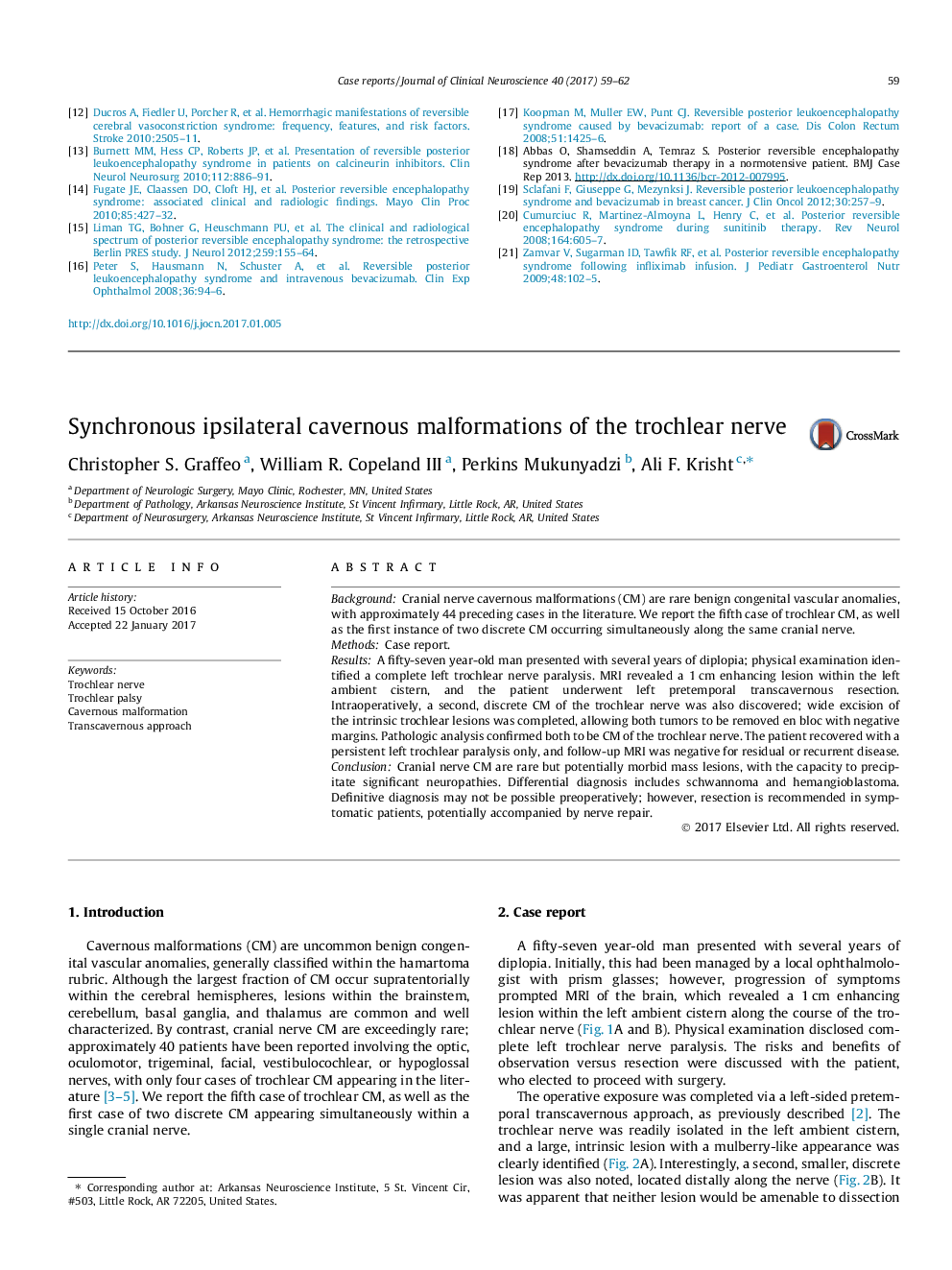| Article ID | Journal | Published Year | Pages | File Type |
|---|---|---|---|---|
| 5629696 | Journal of Clinical Neuroscience | 2017 | 4 Pages |
â¢Cranial nerve cavernous malformation (CM) is a rare benign congenital vascular anomaly.â¢We report the fifth case of trochlear CM, in a patient with two synchronous trochlear lesions.â¢Differential diagnosis in suspected trochlear CM includes schwannoma and hemangioblastoma.â¢Resection is recommended in symptomatic patients, potentially accompanied by nerve repair.
BackgroundCranial nerve cavernous malformations (CM) are rare benign congenital vascular anomalies, with approximately 44 preceding cases in the literature. We report the fifth case of trochlear CM, as well as the first instance of two discrete CM occurring simultaneously along the same cranial nerve.MethodsCase report.ResultsA fifty-seven year-old man presented with several years of diplopia; physical examination identified a complete left trochlear nerve paralysis. MRI revealed a 1Â cm enhancing lesion within the left ambient cistern, and the patient underwent left pretemporal transcavernous resection. Intraoperatively, a second, discrete CM of the trochlear nerve was also discovered; wide excision of the intrinsic trochlear lesions was completed, allowing both tumors to be removed en bloc with negative margins. Pathologic analysis confirmed both to be CM of the trochlear nerve. The patient recovered with a persistent left trochlear paralysis only, and follow-up MRI was negative for residual or recurrent disease.ConclusionCranial nerve CM are rare but potentially morbid mass lesions, with the capacity to precipitate significant neuropathies. Differential diagnosis includes schwannoma and hemangioblastoma. Definitive diagnosis may not be possible preoperatively; however, resection is recommended in symptomatic patients, potentially accompanied by nerve repair.
